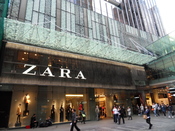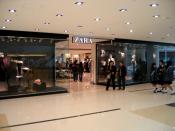ZARA
Internal analysis.
Zara's core competence is recognizing and assimilating the continuous changes in fashion. They're very good at this because there's a very good communication within the company. Store managers send information about the customer demands and new fashion trends to the headquarters on a daily basis. So if there's a new trend, Zara is able to adapt their products or design new articles immediately. If a design doesn't sell within a week, it's withdrawn from the shops, further orders are cancelled and a new design is developed. This is only possible because of a good communication between stores and headquarters.
All stores receive goods twice a week and each shipment contains new articles, in this way they avoid having large inventories so less stock costs.
Another core competence is their flexible business model. They're able to adapt to changes during a season, reacting to them by bringing new products to the stores in a very short time.
It only takes Zara 2 weeks to develop a new product and distribute in which is enormously fast in comparison to other clothing companies.
Their key to global competitiveness is their ability to adapt the offer quickly and precisely to the customers desires. Zara first wanted to grow in their own market by opening stores in each city in Spain with more than 100,000 inhabitants. After this they expanded to Portugal. After their expansion to Portugal Zara realised that they had to adjust their business model to suit the new international markets. They kept expanding to markets with minimal cultural differences from the Spanish market like South-America and almost the rest of Europe. They kept expanding to different markets. After deciding which country they are going to enter, Zara follows a pattern of expansion strategy known as 'oil-stain'. Oil-stain strategy is...


